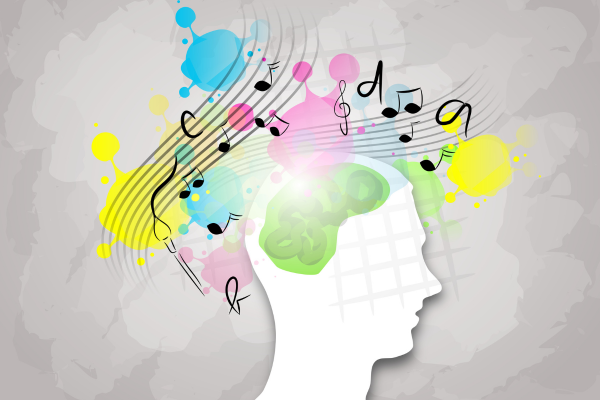Delve into the captivating world of music and sound, unraveling the hidden magic that infuses every beat and rhythm with an enchanting allure. This exploration journeys deep into the heart of music’s mystical power, unlocking the science that underpins its profound effects on the human psyche. Unearth the reasons behind that irresistible foot-tap to a catchy tune, the soothing calm of a gentle melody, and the invigorating energy of a thumping beat.
Marrying the sublime beauty of music with the rigorous logic of science, this exploration offers an intriguing perspective on music’s magnetic influence. From the enigmatic workings of the human brain to the hypnotic power of rhythm and melody, delve into an absorbing discourse that seamlessly bridges the gap between art and science. Discover how the seemingly intangible world of sound can shape emotions, influence behavior, and even promote physical health.
What makes a melody soothing or a beat invigorating? How does a simple rhythm tap into deeply rooted emotions, stirring up a storm of feelings? The answers lie in the intricate tapestry of neuroscience, psychology, and acoustics that underpins every note of music. Through scientific lenses, you’ll explore how sound waves transform into emotional experiences, and the profound effects these experiences have on our lives.
This exploration also delves into the therapeutic potential of music. The soothing strains of a melody can wash away stress, while a lively beat can inject energy into a dreary day. The science behind this transformative power of music is a fascinating subject, shedding light on music’s potential as a healing tool.
Immerse yourself in this fascinating exploration, unearthing the hidden gems that lie at the intersection of science and music. By delving into the world of sound, you’ll gain a deeper appreciation for the magic that infuses every note, beat, and rhythm. And perhaps, in the process, you’ll discover a new way to experience the enchanting world of music.
The Neurological Mechanisms of Music
Music is far more than a pleasant backdrop to our lives—it’s a complex and dynamic stimulus that engages multiple regions of the brain simultaneously. The study of how music affects the nervous system is known as neuromusicology, a fascinating intersection of neuroscience and musicology that reveals the intricate ways our brains respond to rhythm, melody, and harmony.
To appreciate the neurological impact of music, we must first understand how sound is processed. When a musical note is played, it generates vibrations in the air that travel through the outer ear and vibrate the eardrum. These mechanical vibrations are then converted into electrical signals by the cochlea in the inner ear. These signals are transmitted via the auditory nerve to the auditory cortex, located in the temporal lobe of the brain, where they are decoded into what we perceive as sound.
But this is only the beginning of the brain’s response. Music activates a distributed network across the brain, engaging regions involved not just in hearing, but also in emotion, memory, movement, and even language. For example, the cerebellum, best known for its role in motor coordination and timing, is activated when we tap our foot or dance to a beat. This region helps synchronize physical movements to rhythmic cues in music, making it essential to our sense of timing and beat perception.
Meanwhile, the amygdala, a structure deeply involved in emotional processing, lights up when we hear music that evokes strong feelings—whether it’s a mournful cello solo or an uplifting chorus. The emotional color of a piece of music—its tension, resolution, tempo, and key—can all influence activity in the amygdala, contributing to our subjective experience of mood and sentiment.
Another key player is the prefrontal cortex, which is responsible for complex cognitive behavior, decision-making, and social behavior. When we engage with music deeply—whether by analyzing lyrics, appreciating a complex composition, or improvising as a musician—this region becomes more active. Listening to music with shifting harmonies or unexpected rhythms can even challenge our cognitive flexibility, training the brain to adapt and anticipate.
Perhaps most notably, music activates the brain’s reward system, including areas such as the nucleus accumbens, ventral tegmental area (VTA), e orbitofrontal cortex. These regions are rich in dopamine, a neurotransmitter associated with pleasure and motivation. When we listen to music we enjoy, dopamine is released, leading to feelings of joy, anticipation, and satisfaction—similar to the response we have to food, exercise, or social bonding.
Neuroimaging studies using techniques like fMRI e PET scans have confirmed that music listening stimulates brain regions simultaneously in ways that few other stimuli do. This holistic engagement helps explain why music can be such a powerful tool for emotional regulation, cognitive development, and even neurological rehabilitation.
Interestingly, studies have shown that musicians tend to have enhanced connectivity between the two hemispheres of the brain, particularly through a structure called the corpus callosum. This heightened connectivity is likely a result of years of training that require both hemispheres to work in coordination—for instance, reading notes (left hemisphere) while expressing emotional nuance (right hemisphere).
In sum, the neurological mechanisms of music illustrate how deeply embedded music is in our biology. It is not merely a cultural artifact or an artistic pursuit—it is a neurobiological phenomenon that shapes our thoughts, feelings, movements, and memories. Music’s ability to stimulate such a wide range of brain regions simultaneously is what makes it not only pleasurable, but profoundly powerful.
Music and Emotion
Research indicates that music has a profound impact on our emotions. It can evoke strong emotional responses, such as joy, sadness, fear, and surprise. This emotional response to music is mediated by the brain’s reward system, specifically the nucleus accumbens and the ventral tegmental area, which release dopamine when we listen to music we enjoy.
In fact, music can even induce a sense of “chills” or “thrills”. Neuroimaging studies have shown that experiencing these intense emotional responses to music is associated with increased blood flow in areas of the brain linked to reward, emotion, and arousal.
Music and Memory
Among the many profound effects music has on the brain, its unique connection to memory stands out as one of the most powerful and emotionally resonant. The ability of a simple melody to transport us back in time—to a specific place, a person, or a feeling—is more than poetic; it’s rooted in neuroscience. This phenomenon is largely explained by the strong neural link between the auditory cortex and the hippocampus, the brain’s central hub for memory formation and retrieval.

When we listen to music, especially songs that are familiar or emotionally significant, the auditory cortex processes the sound, while the hippocampus helps recall the experiences associated with that music. This dual activation can trigger a cascade of vivid recollections, sometimes in astonishing detail. A few notes of a song from adolescence can revive memories of a first dance, a family road trip, or even the scent of a specific place.
This close connection between music and autobiographical memory—our personal life history—makes music a powerful tool for emotional recollection. Importantly, this link tends to remain remarkably resilient, even in individuals with memory impairments. In patients with Alzheimer’s disease or other forms of dementia, music often unlocks memories that appear otherwise lost. A song from their youth can prompt patients to sing along, smile, or become more communicative, offering moments of clarity and emotional connection.
This resilience is partly because musical memory engages multiple brain areas, not just those typically associated with memory. Emotional centers, such as the amygdala, and motor areas, like the premotor cortex, are also activated. This distributed neural network may explain why music-based memories are more resistant to neurological damage than other types of memories.
Recognizing this potential, music therapy is increasingly being used in clinical settings to support individuals with memory-related conditions. Programs that incorporate personalized playlists—filled with music from a patient’s past—are used to stimulate cognitive function, reduce agitation, and improve mood. These therapeutic interventions often lead to enhanced social interaction, more coherent speech, and a better sense of self in individuals who may otherwise struggle to connect with their environment.
Beyond clinical settings, music also plays a role in educational memory enhancement. Students often use melodies and rhythms to memorize complex information—a method known as mnemonic musical encoding. This technique leverages the brain’s natural affinity for rhythm and pattern, making it easier to retain and retrieve information.
In essence, music serves as a neural key, unlocking not only forgotten memories but also the emotions that accompany them. It transcends the boundaries of language and time, preserving fragments of our lives in melody. Whether as a form of therapy, a tool for learning, or a source of nostalgia, music’s intimate link with memory reaffirms its role as a fundamental part of the human experience.
The Therapeutic Effects of Music
Music therapy is a growing field that utilizes music to aid in the treatment of a variety of conditions, including stress, anxiety, and depression. The therapeutic effects of music are believed to be mediated by its ability to regulate mood, reduce stress, and promote relaxation.
Music therapy also shows promise in managing chronic pain. Research suggests that listening to music can reduce the perception of pain, possibly by activating the brain’s natural opioid system.
Music and Cognitive Function
Studies have shown that musical training can enhance cognitive function, including memory, attention, and problem-solving skills. Musicians, compared to non-musicians, tend to have better working memory, auditory skills, and cognitive flexibility. This might be attributed to the fact that playing a musical instrument requires coordination of multiple brain regions.

Furthermore, learning to play an instrument at a young age can have long-term benefits on brain development. This can lead to enhanced academic performance and improved executive function, which includes skills such as task management, problem-solving, and decision-making.
Music and Physical Performance
Music can boost physical performance by stimulating motor areas of the brain, helping to synchronize movements, and creating a rhythmic response that promotes physical activity. This is why workout playlists and motivational music are common in fitness environments.
The Impact of Different Genres
Different musical genres elicit distinct psychological and physiological responses. Upbeat genres like techno, pop, or heavy metal tend to elevate heart rate, stimulate adrenaline release, and boost energy levels, making them ideal for workouts or high-intensity tasks. In contrast, slower genres such as classical, ambient, or jazz are associated with reduced cortisol levels, promoting relaxation, lower blood pressure, and a calmer mental state. Even lyrical content can influence mood—uplifting lyrics may inspire optimism, while melancholic songs can foster emotional catharsis. Thus, genre selection plays a crucial role in shaping our mood, focus, and emotional well-being.

Conclusão
In conclusion, the fascinating journey of understanding the science behind music’s magical effects has illuminated the power of sound. Unleashing the hidden capabilities of music, from influencing our moods to boosting our cognitive abilities, reveals the significant role it plays in our lives. The melodious harmonies we enjoy not only serve as a source of entertainment but also impact our mental and emotional wellbeing, proving that music is indeed a universal language. Its therapeutic potential can be harnessed to promote healing, enhance memory, and even improve physical performance. The synchronization of our brainwaves with the rhythm of music is a testament to the profound connection between sound and human consciousness. As we continue to unlock the potential of sound, we are not just exploring an art form, but also the intricate design of the human mind and its astounding capacity for perception. This emphasizes the importance of further research in this sphere, to fully utilize the transformative power of music. Therefore, it’s fair to say that the power of sound, specifically music, extends far beyond entertainment, deeply engraving itself into the fabric of our being.
Ultimately, music connects us—across cultures, generations, and even neurological conditions. Whether soothing a restless mind, igniting creative sparks, or fostering emotional healing, music is both a mirror of human experience and a tool for human progress. Its influence is timeless, and its potential, limitless.


